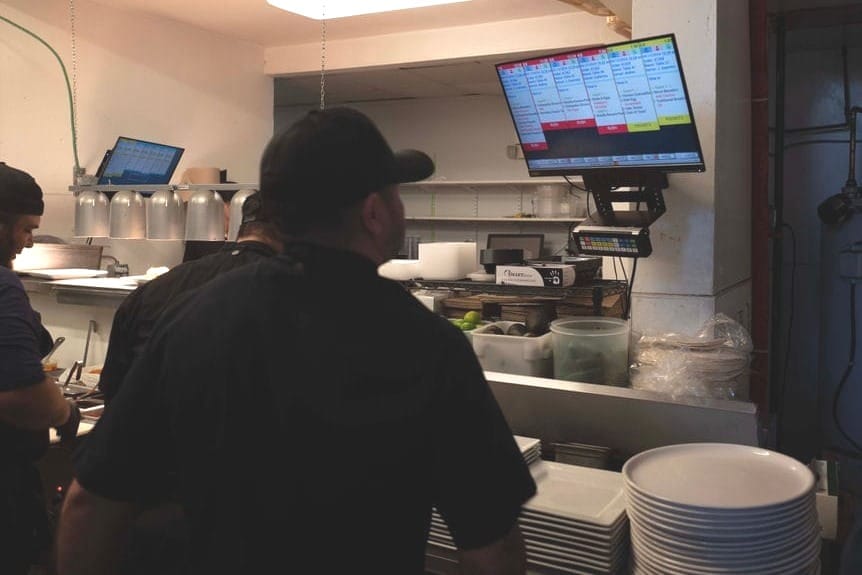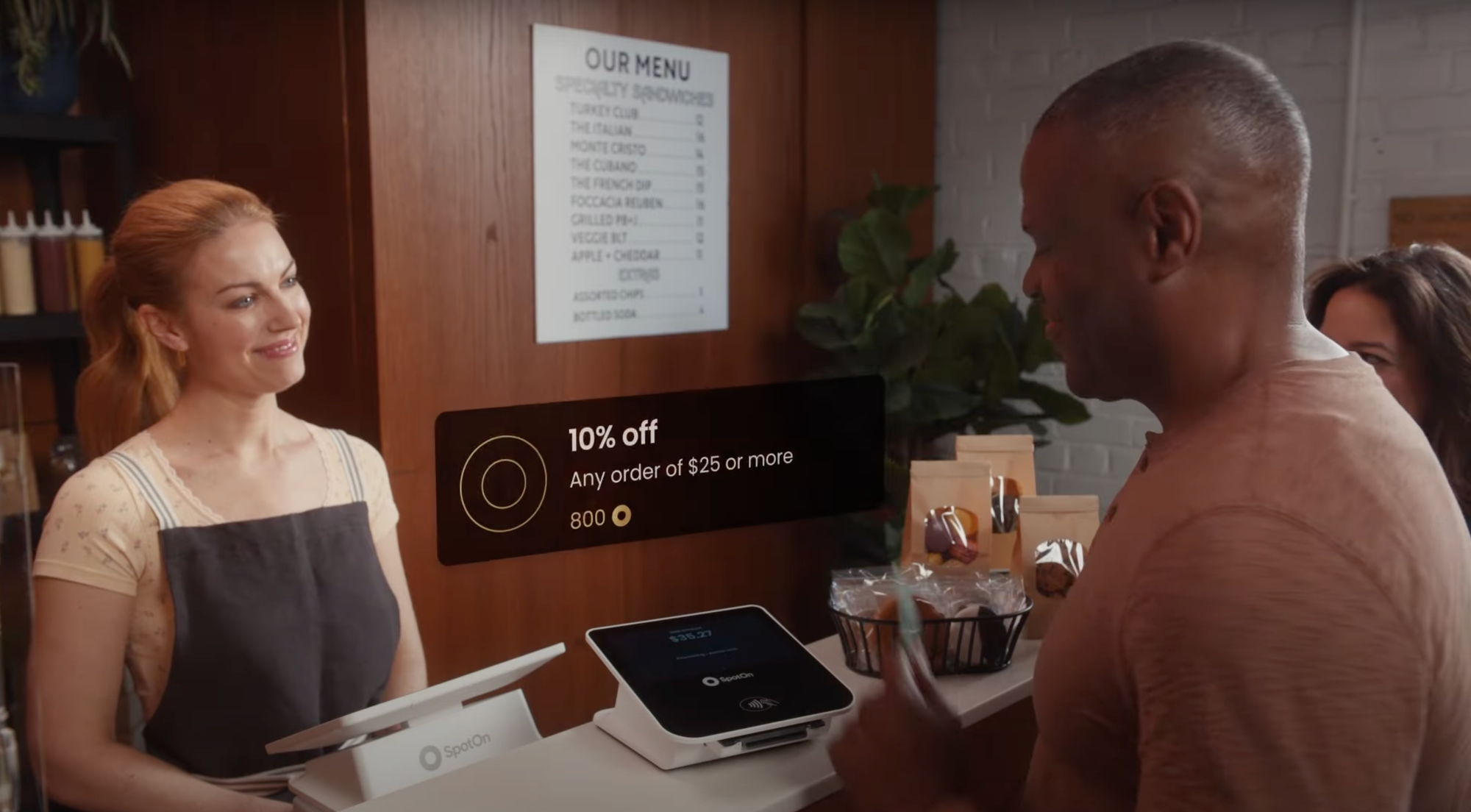We all know it. Restaurant profit margins are pretty low. But not entirely because of inflation, labor shortages, and high food costs. Sure these make it worse, but the real reason why owners struggle to make a profit is because it's damn hard to run an efficient restaurant business. Here we explain restaurant profit margins, show you how to calculate yours, and provide real ways to get that bottom line up. Let's get into it.

- Gross and net profit margins for restaurants
- What is the average restaurant profit margin?
- Restaurant profit margin calculator
- How to lower restaurant costs
- How to increase restaurant sales
Gross and net profit margins for restaurants
In restaurants, profit margin is the percentage of revenue left over after expenses and costs are taken out. Gross profit margin subtracts only the Cost of Goods Sold (COGS) to determine the profitability of your food and beverages, while net profit margin subtracts all your costs to determine the profitability of your entire operation.
Because we're exploring ways to boost your overall profit, we'll focus on net profit margin. Generally, a good profit margin for restaurants is 10% or higher. With this goal in mind, many owners aim to spend 30% on labor, 30% on COGS (Costs of Goods Sold), and 30% on overhead (operating costs). Depending on your restaurant type, your percentages might look different. The important thing is that your costs are low enough and your revenue is high enough, so your restaurant's financial health is in good shape.

What is the average restaurant profit margin?
The average profit margin in the restaurant industry is 5%, according to a National Restaurant Association report in 2022. At the beginning of 2024, the NRA reported that 73% of operators expected profit to be less or the same over the year, with 38% saying they didn't make any profit in 2023. So the current average restaurant profit margin is most likely lower today.
What are the margins on restaurants?
It's assumed that certain restaurant types are more profitable than others. A bar or brewery is considered to have the highest profit margin in the restaurant business, with a gross profit margin on alcohol of around 80%. But many owners don't account for the high fixed costs of bars, like repairs, insurance, and alcohol theft, which can leave them with less profit than expected.
Quick-service restaurants—like cafes, fast food, and fast casual—are estimated to have decent profit margins with lower food and labor costs. However, sit-down operations struggle most because of more complex menus and service models. Here are the speculated profit margins for each restaurant type.

Full-service restaurants
- Breweries 10–20%
- Bars 10–15%
- Buffets 5–8%
- Casual dining 3–6%
- Fine dining 0–5%
Counter-service restaurants
- Pizzerias 10–15%
- Cafe & bakery 8–12%
- Food truck 6–10%
- Quick service 6–9%
- Fast casual 6–9%
Restaurant profit margin calculator
To find your profit margins, you'll need your revenue and costs for a month. More on that below. Once you have those, you can take our restaurant profit margin calculator for a spin. Just plug in your revenue and costs, and it'll show you your margins. It even gives you solutions for increasing revenue and lowering costs. Check it out.
1. Revenue. This is all the income from your food and beverage sales, catering, branded merchandise, packaged goods, venue hire, etc. You should be able to find this data in your POS reporting.
2. Labor costs. This is what you pay your salary and hourly workers, along with any independent contractors. Look in your POS reporting for hourly labor and check your books for the others.
3. COGS. Your Cost of Goods Sold is your food and beverage costs, along with the cost of any merchandise you sell. Check with your kitchen manager or accountant for these numbers.
4. Overhead costs. These include rent, utilities, licenses, equipment, repairs, credit card processing fees—anything that's not labor or COGS. Look in your accounting books for these. If all else fails, check your bank account.
How to lower restaurant costs
Lowering costs is not just about cutting expenses, but making your restaurant more efficient. There are lots of ways to do this, but we'll focus on the five that'll have the biggest impact on your margins.
SpotOn Profit Assist uses AI to automatically analyze your costs and find savings
1. Make sure your schedule never goes over budget
The schedule is where your hourly labor costs are spent. If you understaff and get slammed, your guests have a bad experience, and your team is frustrated. But if you overstaff, you spend too much on labor and lose profit. In most restaurants, managers can't see how the schedule affects profit margins, so they tend to overstaff to avoid trouble. That's profit down the drain.
The problem is there's a disconnect between the schedule, wages, and sales because the POS and the schedule can't talk to each other. POS-integrated restaurant scheduling software solves this issue. It puts calculated labor costs and projected sales right into the schedule, so managers can see the labor percentage of every shift and owners can prohibit schedules from being published if they're not within a set budget.

Additionally, when the POS and schedule sync up, restaurants can utilize schedule enforcement to prevent staff from clocking in early without manager approval. This system of checks and balances puts guardrails around your labor costs to help keep your profit margins intact.
2. Control COGS with inventory management
Depending on your concept, you've got between 30 and 300 ingredients, many of which are found in multiple menu items in various amounts. On top of that, their costs are constantly changing—probably up more than down. These variables are used to calculate your recipe costs, which can be a lot of work to do manually.
Inventory management software does that for you. Along with helping you track inventory, it combines your recipes and ingredient costs, to give you an accurate recipe cost for every menu item. Next, the software integrates with the point-of-sale to perform menu engineering—the analysis of an item's popularity (sales) to its profitability (menu price - recipe costs).
With menu engineering, restaurant owners get real-time data that helps them determine if they need to modify ingredients, adjust portioning, remove items, offer discounts, or raise prices. Otherwise, it's just guesswork and you're probably losing money. If you need to take control of your food and beverage costs, a good platform to consider is MarginEdge.
3. Give staff handhelds to serve more people
Full-service: In a 24-table restaurant, you might have 6 servers taking 4 tables each (6 x 4 = 24). But if they could each handle 8 tables, you'd only need 3 servers (3 x 8 = 24), and you could significantly lower your labor costs. This is possible with handhelds—a portable POS that fits in a server's apron pocket.
Handhelds enable servers to take orders and payments at the table instead of running to and from the POS, making them twice as efficient. But that's just the beginning. As servers spend more time with guests, they upsell more often and are around to capture additional orders. Also, with more tables and bigger checks comes more tips, keeping your best staff happy.

Counter-service: When there's a lineup at the POS during the lunch rush, handhelds let you quickly start additional lines. Or if there's a bottleneck in the drive-thru, staff can pick up a handheld and take orders to keep the line moving.
4. Eliminate front-of-house and kitchen mistakes
When an item is discounted, comped, remade, or dead in the window, that's food waste killing your profit margins. Just missing a "no mayo" modifier could mean the remake of a $15 hamburger. Let's look at two ways orders can go wrong and how to prevent them.
- Servers enter orders incorrectly or forget to place them (full service)
This often happens when servers transfer orders from their notepad (illegible handwriting) to the POS. Or they memorize the order and get distracted by other requests. This can be fixed with a handheld POS system. As mentioned earlier, handhelds enable servers to put the order into the POS the moment a guest says it, significantly reducing the possibility of a server making a mistake.
- Tickets are missing or can't be read (full service and counter service)
In a busy restaurant, printed tickets can be very problematic. Tickets often go missing because they fall off the rail, the printer runs out of paper, or a wire is disconnected. Sometimes cooks make orders incorrectly because tickets get smudged, fall into the sauce, or the ink is running low. Another issue might be that the cooks have so many tickets that they miscount items and have too many orders on the grill.

A kitchen display system eliminates these problems because it never loses orders, always keeps tickets in order, is smudge-proof, has an all-day view, and lets your cooks know when ticket times are running long. When the communication between guests, servers, and staff in the kitchen is clear, ordering and preparation mistakes are minimized to reduce food costs significantly. That's a boost to your margins.
5. Get a POS provider who cares about your profit
If you're like most restaurants, 90% of your revenue is coming in through debit or credit cards. With those digital payments comes fees—another operating expense. Are they worth it? That depends. If you feel your POS provider (credit card processor) is helping you be more profitable, then yes. But if it seems like they're just trying to take your money, you should go elsewhere.
Your POS and the tech around it have the potential to make your restaurant more efficient and more profitable. That's why it's essential to partner with a company that's:
- Honest. Pricing structures should be transparent with no hidden or junk fees. When you ask questions, they should be upfront about what rates they can offer and how their technology can help your restaurant.
- Caring. Running a restaurant is complex, which means the tech can be too. The right provider will focus on what's best for your business and steer you to the pricing and tech options that make the most sense for you.
- Innovative. Your provider should have forward-thinking solutions. Look for a cloud-based platform with integrated products that can realistically help you bring in revenue and lower costs.
How to increase restaurant sales
Lowering costs can only get your profit margins so far. To go further, you need to increase sales. Let's look at the two biggest ways your restaurant can do this while keeping expenses down.
6. Bring in more money with POS-integrated online ordering
You've already got a menu, you just need more people ordering. A POS-integrated online ordering system lets new and regular guests order from your own online ordering page via Google or your website. For restaurants that don't already have online ordering, this creates another stream of revenue other than on-site dining.

And if you're using third-party delivery apps like DoorDash and UberEats, you can minimize those hefty per-order commissions (upwards of 30%) by teaching your guests to order directly from your site. POS-integrated online order has other advantages too:
- Orders go straight to the kitchen. No staff entry is needed.
- Restaurants pay a flat monthly rate. No high commissions.
- Restaurants keep their ordering data to see what's selling.
- A loyalty program can be integrated into online ordering.
When you implement online ordering in the right way, you'll not only see your profit margins increase but also the loyalty of your customer base.
7. Stay in touch with guests and offer promotions
It's five times cheaper to get a customer back in the door than to get a new one. That's why if you want to get more business with less work, you've got to collect customer information and offer deals periodically. This starts with making it easy for guests to give you their details. That could happen when they request a digital receipt, order from you online, or sign up for your loyalty program.

From there, you can send out emails weekly, monthly, or every couple of months to offer your guests special promotions or tell them about upcoming events. While this may seem like a lot of work, all of it can be automated with the right software. The secret is to set up everything correctly from the beginning, and then let marketing automation software do the hard work for you. More traffic. Less spending.
Set up systems for more profit
Increasing restaurant profit margins isn't about staying open later, taking orders faster, or hiring more staff. Instead of adding more work, you need to multiply your team's efforts. The right tools will make this happen. This starts with your restaurant POS system. After that, you can add on tools like inventory management, scheduling, handhelds, a KDS, online ordering, a loyalty program, and marketing automation for better efficiency (lower costs) and more revenue. These tools create profitable systems for every part of your restaurant. And when profit is automated, you can focus on more important goals, like expanding to more locations or growing the one you already have.

About Joe
Joe Nicholson was a manager, server, and busser for 9 years at one of the busiest restaurants in California, Tower Cafe. He now works at SpotOn as a copywriter to help restaurant owners understand how they can use technology to make their business more successful.












